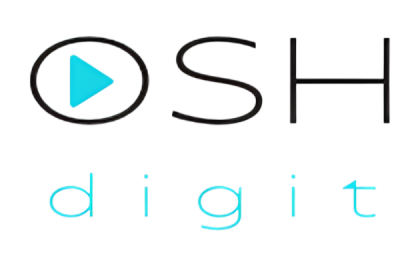Your cart is currently empty!
19. Peer Assessment
Involving students in evaluation can be beneficial for the learning process. Falchikov (1995) defines peer assessment as an evaluative process through which teams of individuals rate their peers/mates. This assessment practice uses rating instruments or checklists designated to fill teams’ particular needs (Dochy et al., 1999).
However, students and teachers still feel insecure about this type of assessment, preferring the traditional summative evaluation. Still, Dochy et al. (1999) cited by Fernandes et al. (2012), defend this evaluation process, affirming that it develops more competencies in students.
Apart from the students’ and teachers’ perspectives and resistance, peer assessment benefits all parties. It is verified a consistent behaviour related to student self-assessment that coincides with the teachers’ perception; that is, professors generally attribute a grade to a student, being that grade is within their expectations. Hence, this model foments a solid self-assessment for peer evaluation (Romá et al., 2022).
Besides the evaluation of teams, teachers also evaluate the students in their course units.
The objective of this kind of evaluation is to collect evaluative data through multiple methods in different phases of the process that provides monitoring and assessment of all individuals’ learning process. Ultimately, it mainly ensures that the assessment is focused on the final product but also the journey of the learning process. This is obtained over the outcomes/capacities acquired and observed during the learning process (teamwork development and in their project management), involved these students regularly in meets with their tutor that also have the opportunity to monitor, give feedback and assess this development as a team and individually to improving competences and the learning process of each one.
Related to the individual identity of students, they have an active role in this process; they participate in project assessment (product) and the team members’ assessment (process). The evaluation of the project is designated by reviewing the oral presentations and the mid-term project reports and developing feedback on each other members’ team improvement of work. This activity intends to compare all individuals to their related teammates to increase knowledge, learning, and individual progress.
Assessment of students’ technical competencies, or Product Assessment, is provided by their written reports, oral presentations, prototypes and written test. All these milestones can be transformed in a summative approach that results in a team classification. But this evaluation format can be defined and changed by the teachers involved. In this case, it demonstrated where the team grad had an individual correction factor that depended on a written test at the end of the project and involved peer assessment.
Peer Assessment methods are described by Baker (2008). That can be divided into two forms: rating and distribution.
The Rating Scales Method is used to observe and assess various behaviours and can be based on a Likert scale from 1-10 with usually six criteria four times throughout the semester. The teachers can discuss a scale that students agree with for each assessment dimension; each student assigns a scale value to teammates. If there is the intention of self-assessment, each student must attribute a deal for themselves.
The weight factor is equivalent to each peer’s (total rate) ratio divided by the average rate.
The median of ratings is recommended by (Baker, 2008; Topping, 2003, 2009) cited by (Nagai et al., 2019) instead of the average of peer’s ratings. The weight factor is usually established by the teachers and is related to the team project’s final grade. This relationship can be absolute or relative to the teacher’s course. If a threshold is set, the weight factor can be used for motivating and observing behaviours related to specific elements about their teammates. The point can be defined as up or down in 10-20 per cent of the weight factor.
The Distribution Method is similar to the rating method, but the relative values aim to compare the performance instead of assigning an absolute scale. This method uses a proportional number of points based on the number of teammates. It consists of the number of teammates multiplied by 10, but teachers can establish other values like 100, for example. Each peer should distribute all points between teammates, but the sum should never be higher than the total points. The calculation of the Distribution method is similar to the Rating method (Nagai et al., 2019).
The following table shows the distribution of the evaluation moments:

In short, PBL presents a synergy between Self-Assessment (SA) and Team Assessment (TA), resulting in Peer Assessment that consists of individual consideration of amount, level, value, worth and quality, or is it associated with success associated with outcomes and products obtain in peer learning or similar status (Topping, 1998 cited by Gielen et al., 2011). Nevertheless, different publications agree that the terminology (peer assessment) is the same but can regard other working methods, making this design multifaced (Gielen et al., 2011).
The following documents serve as a model for performing the peer review:
The Peer Review Support Guide is a more explanatory document and allows, together with the Excel sheets, to understand and properly execute the application of the peer assessment.
-
20. Student’s perception and feedback about the evaluation
The 21st-century competencies are different considering that with COVID-19 digitalization was boosted what brings the necessity to acquire new ones and re-evaluate teaching strategies, particularly because of the unpredictable situations related to relating to those times and the type of teaching context- online (Howe & Watson, 2021). The 4 most reported are: critical thinking/problem-solving; creativity;…
-
21. Resources

Resources can be physical or digital. A set of tools that can be used in the different approaches to problem-solving in the different phases will be supplied. Students should use several reputable platforms to substantiate their research, but they can also use physical resources generally used in interacting with labour environments, like equipment and “paper-pencil”…
-
22. Bibliography

Alves, A. C., & Eira, R. (2015). A aprendizagem implícita do Empreendedorismo no desenvolvimento de projetos interdisciplinares. 8–24. Alves, A. C., & Leão, C. P. (2015). Action, practice and research in project based learning in an industrial engineering and management program. ASME International Mechanical Engineering Congress and Exposition, Proceedings (IMECE), 5–2015. https://doi.org/10.1115/IMECE2015-51438 Alves, A. C.,…
